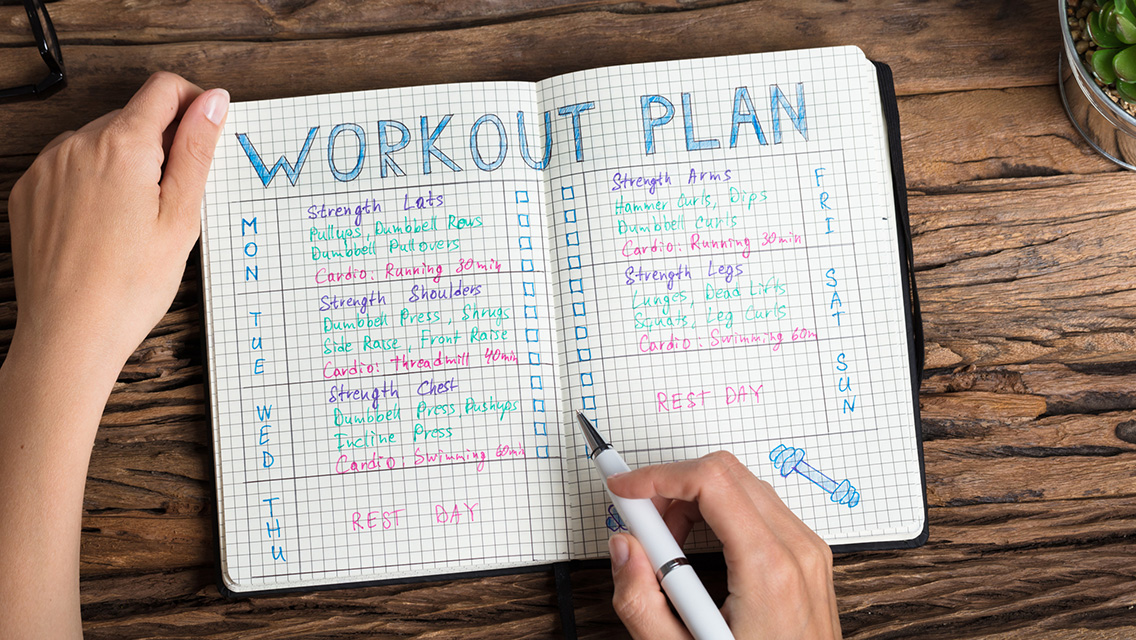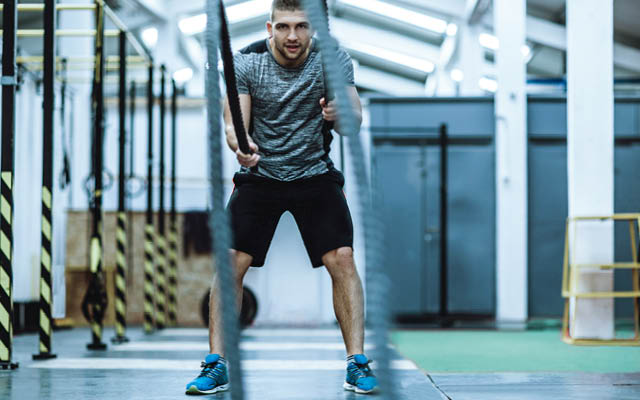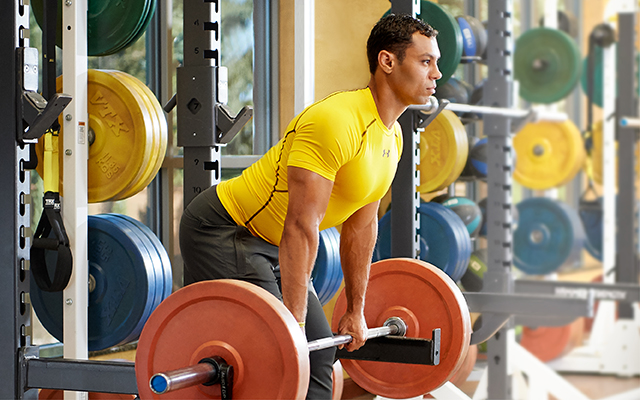Remember the last time you bought a complex electronic device? You came home from the store bursting with excitement — only to find yourself confronted by a bunch of unfamiliar buttons. The thrill of acquisition can fade quickly in the face of a steep learning curve. And the same thing can happen when you purchase your first (or your first-in-a-long-time) health-club membership. You might feel hopeful and highly motivated on the way in the front door, but once you march out of the changing room, it’s easy to get overwhelmed by the sheer quantity of exercise equipment and workout options. Where do you even begin?
In the same way a good user’s manual for a new gadget builds competence and confidence by presenting the most essential features first, this “quick-start guide” can help you develop your savvy as a new health-club member. Master the essentials now — and take on the advanced features when you’re ready.
Fitness ABCs
As you’re starting out, there are three basic principles of effective exercise for you to keep in mind:
A. Acquire basic skills
Put the emphasis on “basic” for the time being, but commit to learning as you go. The more advanced your skill set, the more interesting and effective your workouts will become. Fortunately, it takes only a few simple skills to get started.
First, you need to use the equipment properly, whether it’s a treadmill or a strength-training machine. Simply ask a personal trainer or other fitness staff member to show you how. Basic equipment orientation is a free service that your health club is obligated to provide, says Kelli Calabrese, MS, CSCS, lead exercise physiologist for the National Exercise and Sports Training Association, and 2004 personal trainer of the year for online training. And don’t be afraid of asking a “stupid” question about how a machine works — there’s no shame in wanting to get it right the first time.
The same goes for resistance exercises: Many look simple enough, but there often are subtleties that are easy to miss (such as tightening the core muscles when performing a squat). Plus, even experienced gym-goers often perform exercises with improper technique, so it’s best to learn your strength and flexibility exercises from an authoritative source.
“You can try workouts from a magazine, or get a book that shows you how to do various exercises and presents some workout routines,” says Calabrese, creator of the Feminine, Firm and Fit program. “There are also lots of good videos that teach proper form, and you can even get workouts sent to your phone.” (For a quick guide on how to correctly perform the squat, bench press and deadlift — along with their variations — see “Strong-Body Basics.”)
One of the best ways to build fitness knowledge and confidence in record time? Purchase a few sessions with a personal trainer, or for a more economical alternative, sign up for small-group sessions. A growing trend in the fitness industry, these sessions allow you to split the cost of hiring a trainer with others who share similar fitness goals, while still getting focused, professional attention.
A key benefit of a personal trainer is that he or she can evaluate your current level of fitness, ensuring that your workouts are custom-tailored to your abilities and goals. Another low-cost option: Enroll in group-fitness classes. “In some classes you do 30 or 40 different exercises,” says Calabrese. “If you listen closely to the instructor’s cues, you’ll quickly master a number of different movements you can do on your own.”
B. Balance your routine
Different forms of exercise provide different benefits. To stave off overuse injuries and avoid muscle imbalances, you should include aerobic workouts, strength workouts and stretching in your weekly exercise schedule.
Aerobic exercise can help rid the body of excess fat and strengthen the cardiovascular and metabolic system. It also produces a long list of health benefits, including lower blood pressure; balanced blood sugar; improved cholesterol levels; better sleep, mood and mental function; and reduced risk of diabetes, stroke and certain types of cancer. Strength exercise improves body composition and performance in daily activities such as lifting boxes and climbing stairs. And stretching can help improve your posture and joint health, increase your range of motion, and reduce your likelihood of injury.
The American College of Sports Medicine (ACSM) recommends at least 30 minutes of moderate aerobic exercise (such as stationary bicycling) five or more times a week, or at least 20 minutes of vigorous aerobic exercise three or more times a week, plus full-body strength exercise (such as weightlifting) at least twice a week. ACSM makes no formal recommendation for stretching, but Calabrese recommends you stretch at least three times a week. Stretching daily is fine as long as your body is warmed up (stretching cold tends to be less effective and can even put you at risk of injury).
OK, that might seem like a whole lot of exercise, but making it happen isn’t as daunting as it sounds. A regular Pilates or yoga class can increase flexibility and build strength; many group-fitness classes cover cardio, strength and flexibility all in one.
C. Challenge yourself
“It’s important to work hard,” says Lou Schuler, CSCS, coauthor of The New Rules of Lifting: Six Basic Moves for Maximum Muscle and The New Rules of Lifting for Women. “If you go through the motions in the gym, you’re going to get the same kind of results you get from going through the motions in a job.”
Your workouts must require your body to work a little longer or faster than it’s accustomed to, to perform unfamiliar movements against resistance, or to confront other types of limitations. That doesn’t mean every workout has to be harder than the last one. What it does mean is that most workouts should be challenging in some way, and you should consistently vary the structure and format of your workouts. For example, make sure your cardio workouts feature intervals of different durations and intensities, and your strength workouts feature different levels of resistance and repetitions. Learn to welcome the experience of finding your “edge” — that’s your body’s signal that it’s getting the signal to change.
The Right Stuff
Intimidated by the endless aisles of strength-training machines and the alcoves full of complicated-looking equipment? Don’t be, says Schuler: You can ignore most of it for now — or maybe even forever. “The best way to build muscle is to mimic movements your body is designed to do, such as running and jumping,” he says. “Squatting mimics jumping. Lunging is similar to running.” That’s why Schuler’s list of “best equipment” includes mostly low-tech items like dumbbells, barbells, a cable-pulley station and your own body weight. The key, as noted above, is learning proper exercise form.
“The best way to build muscle is to mimic movements your body is designed to do, such as running and jumping.”
That said, it is worth learning to use the cardio machines. Treadmills, stationary bikes, rowing machines, stair climbers and elliptical trainers all provide a good workout. Just pick a machine — or better, a few — that you enjoy. “Try them all,” says Calabrese. “A lot of people just try one machine and stick with it, whether they like it or not. But variety is key to progressing your cardiovascular fitness and fat-burning potential.” (Get strong, build power, and burn fat on your go-to cardio machine with these fun and effective workout ideas.)
Most stretches require little or no equipment, but you should be aware of at least two different stretching methods.
Static stretching entails holding a stretch (such as a toe touch) for 10 to 30 seconds. It’s best to do this type of stretching after a cardio or resistance workout, when your muscles are already warm and pliable.
Dynamic stretches, on the other hand, involve repeating movements through a full range of motion. For example, swinging each arm in a giant circle, forward six times and backward six times, provides a dynamic stretch for the shoulders. This type of stretching is effective before your workout (but after a brief warm-up) because it increases active range of motion.
Few gym-goers use every resource that a modern health club offers, in the same way few consumers use every feature of a high-end digital video recorder. The goal, at least for now, is to master the skills, principles and basic equipment you need to get through a balanced, effective, but challenging workout safely and with confidence.
Work Your Workouts
Here are some simple guidelines to start you toward fitness success.
Lou Schuler, CSCS, coauthor of The New Rules of Lifting for Women, recommends that beginner and advanced exercisers alike base their strength workouts on six basic movements the body is designed to do:
- Deadlift (e.g., dead lift with dumbbells)
- Squat (e.g., body-weight box squat using bench)
- Lunge (e.g., forward lunge with dumbbells)
- Push (e.g., pushup)
- Pull (e.g., seated cable row)
- Twist (e.g., cable wood chop)
Choose one or two exercises of each type (there are many variations you can learn over time), and do one or two sets of each. Ask a trainer to show you how.
Cardio Cues
“The best way to get the most out of cardio exercise is to vary your speed,” says Schuler. “Even if you just walk at different speeds, you’ll get more benefit in terms of improving your aerobic capacity and burning more calories.”
“Even if you just walk at different speeds, you’ll get more benefit in terms of improving your aerobic capacity and burning more calories.”
To gauge your intensity level, use the following markers. “Easy” intensity is when you could still sing while exercising. “Medium” requires focus, but you can still carry on a conversation. “High” is when you can no longer carry on a conversation, although you may still be able to manage a short phrase.
Along with your speed and intensity, you can vary your time. A general rule of thumb is to add 10 percent to your cardio time each week (up to 60 minutes, unless you’ve got a sport-specific goal that requires more).
Stretching Tips
You can stretch anytime, but perhaps the most convenient time is between exercises in your strength workouts. “You want to target each major muscle group, because stretching is specific to each joint,” says Kelli Calabrese, MS, CSCS, lead exercise physiologist for the National Exercise and Sports Training Association. That includes the hamstrings, quadriceps, calves, upper back, lower back, chest, shoulders and hips.
This article originally appeared as “Quick Start Fitness: A Beginner’s Guide.”



This Post Has 0 Comments